When it comes to ANC headphones and earphones, the Sony WH-1000XM6 is impossible to discuss without mentioning the company’s longtime rival, Bose, who have been trading blows with Sony since practically the invention of wireless noise cancellation. Unlike Bose, however, Sony isn’t a one-trick pony—they make non-ANC headphones, a full suite of home entertainment gear, professional audio and videography equipment, plus divisions pumping out television, cinema content, and one of the largest music libraries in the industry.
I’m not saying Sony has lost focus—but the fact they still push the XM6 against a competitor entirely devoted to wireless ANC says a lot about their dedication to the line. It would be far easier to settle for second place when your rival has tunnel vision.
Sony WH-1000XM6 Comfort, Durability, and Design Insights
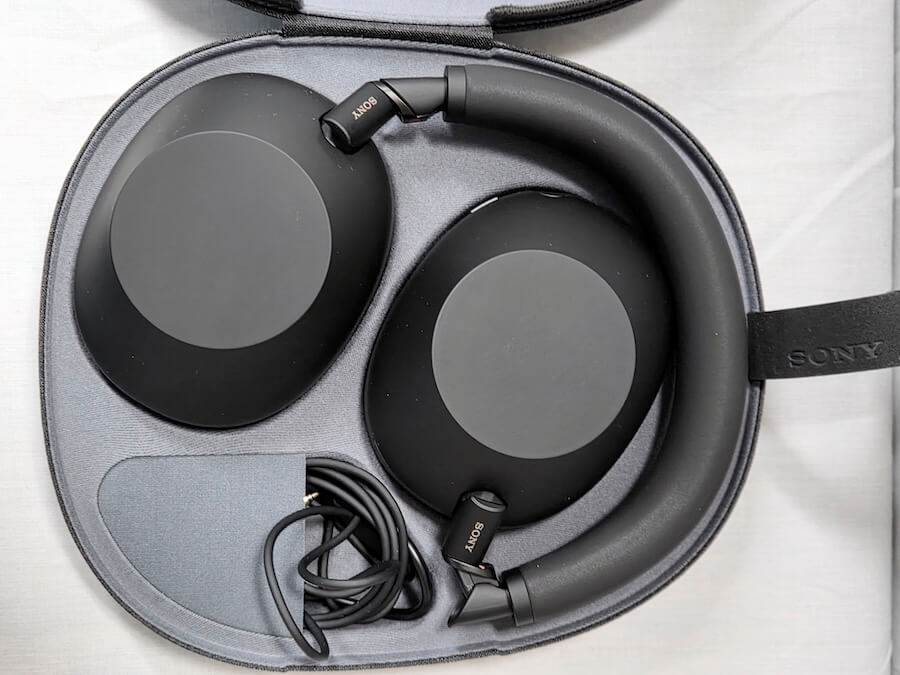
The WH-1000XM6 ships in its usual carrying case, but the first thing you’ll notice is that Sony decided to shrink it this generation. The old zipper closure is gone, replaced by a magnetic flap that actually works—none of that “blow on it and everything falls out” nonsense you sometimes get. Shake it, drop it, even give it a little nudge; the XM6 case stays shut, thankfully.
The reason for the smaller case? Sony added a new folding point at the junction between gimbal and headband. Now the cups lay flat and tuck neatly into the headband, trimming roughly 30% off the previous model’s footprint. Look closely at the headphones themselves and you’ll see they’re almost identical to the XM5, save for the hinge—which, cleverly, isn’t really visible from the outside. A little invisible engineering magic to make your bag lighter, basically.
Materials on the WH-1000XM6 remain largely polymer, with synthetic leather covering the ear pads and headband padding. Color options are platinum silver (Sony’s fancy way of saying white), black, and dark blue. At 254 grams, these sit on the lighter end of the ANC spectrum—comparable to Bose and roughly two-thirds the weight of the AirPods Max.
Clamping force, as usual with ANC headphones, is on the higher side to ensure a solid seal. This was my first minor gripe: as a glasses wearer, the new design pressed on the bows just ahead of the mastoid bend, which made extended listening a bit fatiguing. Since this was a loaner, I didn’t tweak the headband as I normally would with my own pair, so I suspect that adjustment would fix it—but glasses wearers should probably audition first.
The cup size carries over from the XM5, keeping them on the smaller side. Those with larger ears may still find the fit a touch snug. In my case, my ears touched in a few spots, but nothing uncomfortable—familiar territory for anyone who’s spent time on the XM5.
The headband on the XM6 has been redesigned, offering a bit more extension than previous versions and fixing one of the minor annoyances of the XM5: you no longer have to squint into the cups to figure out which way they go. The gimbal arms now clearly point forward, making orientation obvious at a glance.
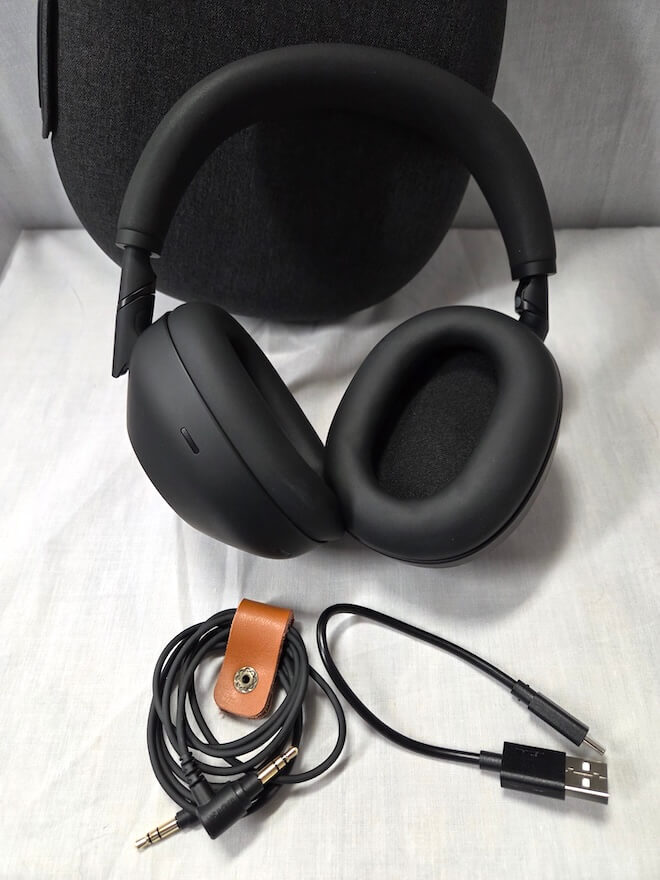
Controls and ports remain mostly unchanged from the XM5. The case still includes both a USB-C cable for charging and a 3.5mm auxiliary cable for wired use. Touch controls sit on the right cup—swipe up or down for volume, tap for other functions. At first, I thought this would be one of those gimmicky touch setups that never works right. Turns out it’s intuitive and reliable, far easier to remember than many other touch-sensitive headphone designs.
Internal Technology and Battery Life
The WH-1000XM6 sticks with 30mm dynamic drivers, now featuring carbon fiber composite domes and a claimed frequency response of 4Hz–40kHz. Compared to the XM5, Sony says the domes are lighter and stiffer, which should improve speed and reduce distortion. I measured impedance and sensitivity, but since the headphones have to be powered on for the test, those numbers reflect the combined electronics and drivers—not the drivers alone. Honestly, knowing that isn’t all that useful anyway, since the electronics can’t be bypassed.
The electronics got a refresh too: Bluetooth 5.3 supports LDAC, AAC, and SBC. Auracast didn’t work in my testing, so for now LDAC is your best bet for top-resolution wireless. One odd omission: the USB-C port is strictly for charging—no wired USB connection to a PC or console. Most competitors allow USB audio, so this feels like a missed opportunity. Sure, you have a 3.5mm aux port, but that relies on your laptop or PC’s sound card, which might not match the resolution of the internal DAC.
Battery life is rated at up to 40 hours—but that’s without ANC, which is basically the whole point of the XM6. With noise cancelling active, expect 28–30 hours. That’s still better than Bose in the same class, but behind the Sennheiser Momentum 4 with its 50+ hours. On the bright side, fast charging works well enough that a quick airport pit stop will likely get you through the next flight.
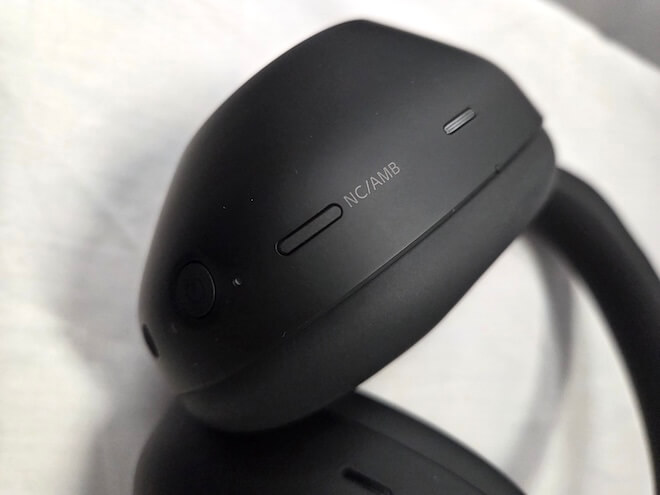
Control App
Like most wireless headphones today, the WH-1000XM6 leans heavily on its companion app for configuration, and Sony’s app has always been packed with options. The XM6 adds even more to the mix: new EQ presets to match the retuned drivers, a 10-band EQ with extra bass control for those who like a thump, spatial audio modes for background music and cinema, an auto-adjusting transparency mode, and voice control—you can say “hey headphones” and issue commands. My kids had a field day interrupting my testing with their own orders, proving it works even if the user doesn’t.
The problem? Finding these features can be more complicated than it should be. The app hasn’t changed much since the XM3, and new additions aren’t always where you’d expect. Features sometimes appear in multiple places, while commonly used settings are buried under layers of menus. For example, EQ options show up both on the main page and in device settings, and some rarely used functions are shoved front and center.
The upside: Sony’s app is as complete as it gets—only maybe Sennheiser comes close—so you’ll probably find what you need. The downside: you’ll spend a few extra minutes digging for it. Some will shrug and say they never touch the app, but with features like Adaptive Sound Control—adjusting ANC on the fly—only accessible through the app, most users will encounter it sooner or later.
Sony WH-1000XM6 ANC Performance: Noise Cancellation, Transparency, and Real-World Use
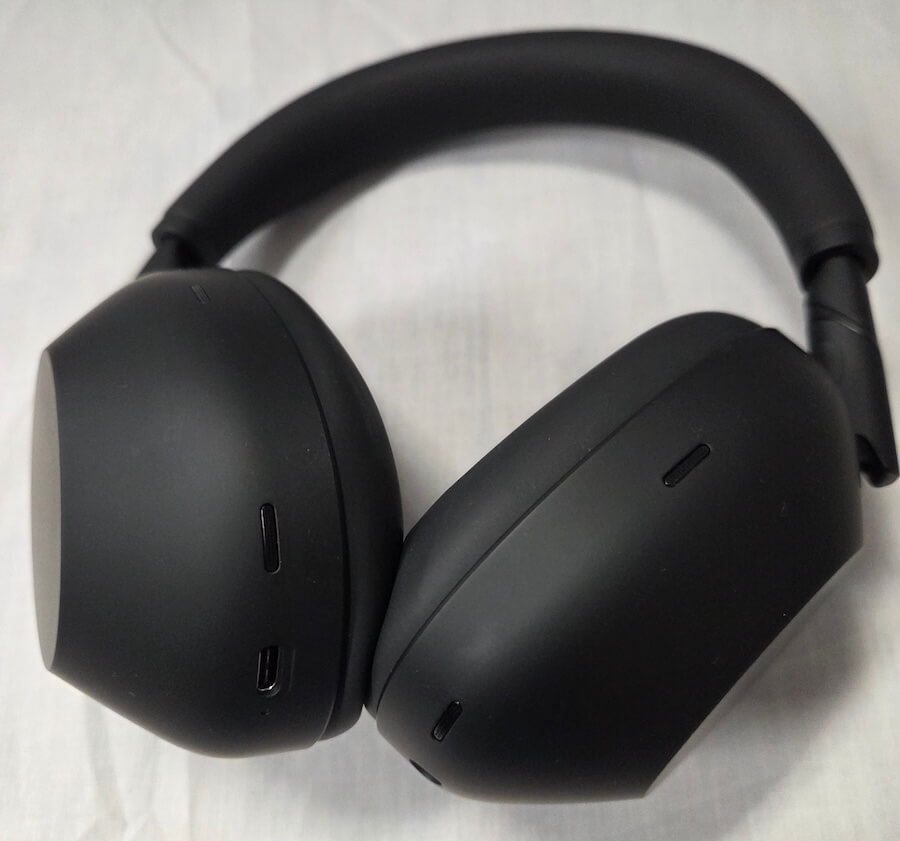
Let’s be honest: the reason most people pick up Sony’s XM series is the ANC, so it shouldn’t be a shock that Sony spent some time refining an already top-tier noise-cancelling system. To my ears, the improvements are evolutionary rather than revolutionary, but they’re noticeably better than the XM5, particularly in handling mid-frequency noise. Low-frequency hums and rumbles are easy enough to scrub, but as the pitch rises and patterns become less predictable, most ANC solutions start to falter.
I have a couple of high-pitched whines around the house that have been my unofficial test bed for years. Usually, the response is a resigned “nope, still there.” With the XM6’s new adaptive ANC (an upgrade of last gen’s auto noise cancelling), I was genuinely surprised: turn it on, and—holy crap—it actually works. The high-pitched whine was gone. That alone puts the XM6 ahead of Bose, Sennheiser, and AirPods Max, all of which fail this test without question.
Part of the XM6’s improved ANC comes down to hardware: there are now six microphones per ear, up from the more typical four. The extra feed-forward and feed-back loops give the QN3 chipset another stage of correction, improving noise reduction without having to slam the audio signal as hard. The result? Less “collateral damage” to the music you actually want to hear. In other words, Sony figured out how to silence the world without making your playlists sound like they just survived a war zone.
In addition to ANC, the XM6 offers both a transparency mode and an auto ambient mode, letting varying amounts of outside sound in. Transparency mode lets voices cut through—slightly behind the AirPods Max in my testing, but still good enough to catch conversations in the room at low listening levels. Auto Ambient switches on transparency when nearby voices or noises hit a certain decibel threshold. It’s a neat idea—alerting you when someone’s trying to get your attention—but in practice it often missed the first word of a sentence while toggling.
For me, if you need situational awareness, stick with manual transparency mode. Auto Ambient might be useful in an office for those who don’t want colleagues sneaking up, serving as a sort of early-warning radar—but don’t expect perfect timing.
Listening Notes: Sound Quality, Detail, and Musical Performance
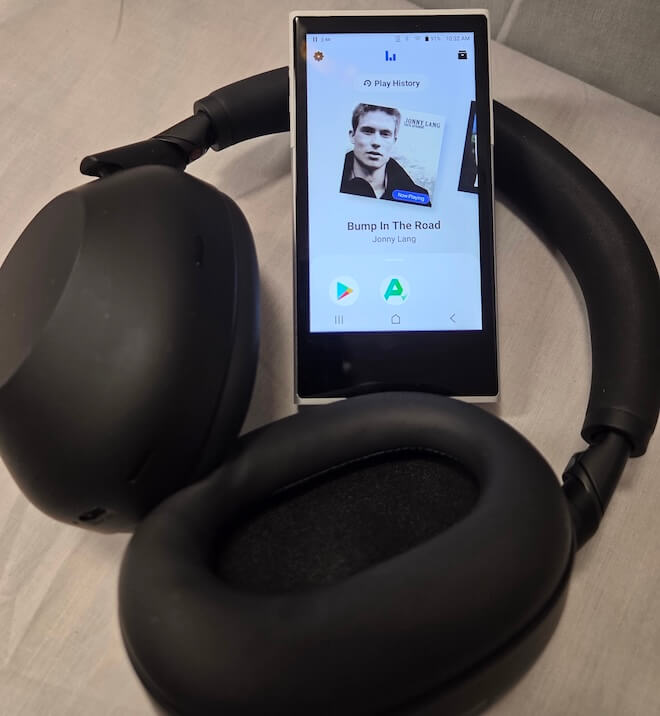
The XM6 sticks with the current consumer trend of a V-shaped tuning, featuring pronounced bass and a slightly recessed treble. Sub-bass gets a noticeable boost, adding rumble while still extending down to around 20Hz with no obvious roll-off. That lift carries into the mid-bass before gradually tapering into the mids.
The mid-bass itself is textured and quick, and while the XM6 definitely favors the low end, it doesn’t become sloppy or uncontrolled—no distracting boominess here. A little EQ can bring the mid-bass closer to neutral for classical or acoustic recordings, but for modern pop, hip-hop, and electronic tracks, the default tuning works well straight out of the box.
Lower mids are slightly elevated, giving male vocals extra weight and allowing them to step forward in the mix. This makes some recordings more engaging—classic baritones feel more present and realistic—but can overemphasise voices that were already pushed forward in mastering. In my listening, the low-mid boost worked well for Marvin Gaye, Johnny Cash, and Jim Morrison, making their tracks more immersive.
Above the lower mids, there’s a slight pullback, so guitars retain good tonality but aren’t spotlighted. Strings, particularly violas and lower violin parts, sound a bit restrained by default but are easy to brighten with some EQ. Upper mids and lower treble give higher voices energy and presence, though occasionally it tips into mild harshness for sensitive ears.
The lower and true treble regions receive a modest lift—not nearly as pronounced as the bass, but enough to give percussion a satisfying snap and attack. That slight boost also adds a touch more air and apparent detail compared to the XM5. While some listeners found the XM5 a bit dark, the XM6’s treble remains far from bright—it’s just more open. Compared to competitors like the Bowers & Wilkins Px7 S3 or AirPods Max, the XM6’s treble is noticeably more restrained and easygoing, avoiding fatigue while still delivering clarity.
Soundstage on the XM6 is solid, offering a touch more width than depth and somewhat limited height. This is a bit surprising given Sony’s push on spatial audio—I expected more vertical layering than what’s present. Using my standard Cowboy Junkies binaural track for testing, echoes are positioned at reasonable distances, but most occupy roughly the same height, even when coming from different directions.
Still, placing the orchestra is straightforward, and instrument separation is quite good. Imaging is competent, though not spectacular—precise enough for most listening, but don’t expect a fully three-dimensional auditory playground.
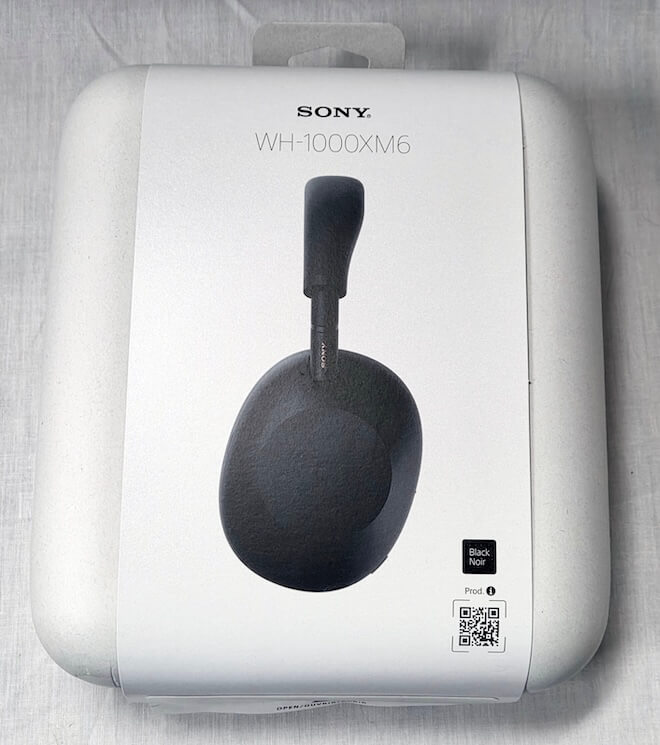
The Bottom Line
The Sony WH-1000XM6 is a fascinating mix of brilliance and compromise. It’s clearly the best-sounding, highest-performing ANC headphone Sony has ever made, yet it comes with a few missteps that might make some pause. The $50 price bump isn’t shocking, but it does make rivals look more appealing. Comfort may be a slight issue for glasses wearers, the lack of USB-wired audio prevents simultaneous charging and listening, and features like LC3/Auracast may not behave as expected—at least for now.
For most listeners, these are minor hurdles: a headband adjustment fixes comfort, battery life minimizes the USB drawback, and firmware updates could sort out the new tech quirks. It’s not perfect, but if you care about the combination of superb ANC and engaging sound, the XM6 is unmatched. Sure, there are headphones that might sound a touch better in isolation, but none can touch the complete package Sony delivers here.
Pros:
- Redesigned foldable headband reduces storage footprint
- Improved carrying case with reliable magnetic closure
- Best-in-class ANC performance, especially mid-frequency noise
- Solid, engaging sound with punchy bass and forward lower mids
- Longer battery life than most competitors
- Touch controls and feature-rich app provide flexibility
Cons:
- Can be uncomfortable for glasses wearers without adjustment
- Mostly plastic construction, may feel less premium
- Treble and midrange may require EQ for certain genres or instruments
- USB-C port only for charging; no wired digital connection
- Higher price point ($450) compared to some rivals
- App organization can be confusing, features buried or duplicated
